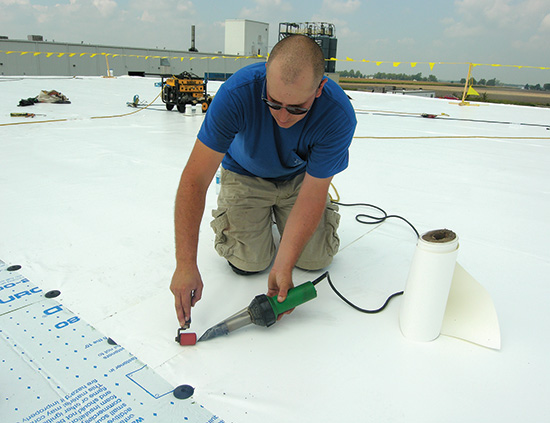Labor Shortage Solution Specifying a Factory-Made Roofing Membrane
Fastening tabs are welded into the membrane sheet for attachment to the roof deck.
Orders are measured, squared up, and all seams are inspected before the membrane leaves the manufacturing facility. The custom-made pieces are then folded from fastening tab-to-fastening tab, with the goal of making unfolding easier and more straightforward for the installation crew.
Prefabricated membrane roofing companies may offer custom-made accessories for penetrations and details. Scuppers, pitch pans, and collector boxes eliminate the need for field fabrication and help increase installation efficiencies.
Factory-made edge metal can also be specified, designed, and delivered to the job-site for a more precise installation that can prevent leakage troubles later on.
Finally, all pieces are rolled and shrink wrapped, ready for delivery to the site.
How a Roofing Membrane Is Installed
On-site, the full package of a custom roofing system is unwrapped. To begin, a prefabricated roof section is unrolled and positioned on the deck to expose the first securement tab. The securement tab is mechanically fastened to the deck with approved fasteners and stress distribution plates.
The roof section is then unfolded and pulled taut to remove any wrinkles exposing the second securement tab. This process is repeated until the entire roof section has been mechanically fastened to the deck, including all securement tabs and edges. The next section of roofing membrane is then positioned to provide a minimum of six inches overlap. The above procedure is repeated for each roof section.
Hot Air Welding
While 80 to 85 percent of welding is done in a factory-controlled setting, there is still welding to do on-site. The workers position the membrane so that the top membrane overlaps the bottom membrane, ensuring the welding area is dry, clean, and free of foreign material.

Photo courtesy of Duro-Last
While up to 85 percent of the seam welding is done in the factory, the remainder is done on-site with an automatic welding machine, or a handheld welder, and a silicone roller.









